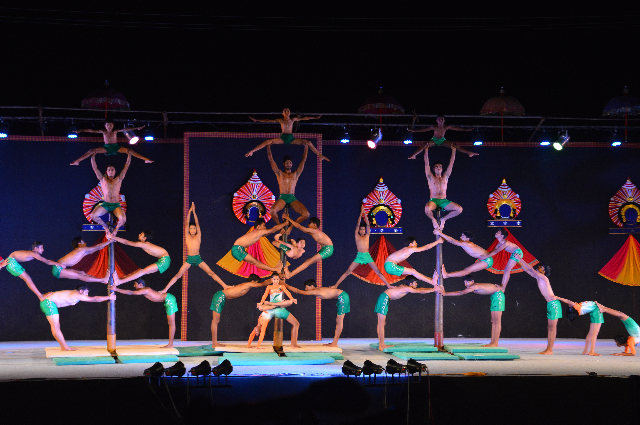“The ability to conquer one’s self is no doubt the most precious of all things that sports bestows.” — Olga Korbut
Tracing its origin from the Indian subcontinent, Mallakhamb is basically a combination of Yoga, Gymnastics & Martial Arts. By words Mallakhamb consists of two:
Malla {i.e. wrestler} + khamb {i.e. pole} = Wrestling pole
Without gender biasedness enjoyed by both women & men in a team or by a single player. In simple terms, it can be described as a sport showing elegant exercises by gymnasts on the vertical standing pole. However, with some speciations, it is also enjoyed with Pole, Rope, Hanging, Niradhar (without support), on cane, on floating platform etc. & can be subdivided into many.
Pole Mallakhamb:
Taking the name from fixed pole in the ground, which is usually made from Indian Rosewood (seesham) smeared with castor oil also in order to minimise friction as body-pole contact, playing aerial yoga by player.Rope Mallakhamb:
Cotton rope is used instead of pole & performers are expected to perform various posters without knotting the rope in any way. Earlier this was also performed on canes.Hanging Mallakhamb:
Similar to pole mallakhamb in which a wooden pole shorter in length than the standard one; is hung with a chain & hooks, leaving a gap between the floor & the bottom of the mallakhamb .With changing time, adding more innovation to earlier game terms , Revolving bottle Mallakhamb , Grease Mallakhamb etc. are addition to more recreational categories .
Timeline:
- Archaeological evidence from Chandraketugarh (2nd century BCE to 1st century CE) presented a couple of exhibitions on a pole with some gymnastic posters.
- Chinese pilgrim Xuanzhang (7th century) drew attention to pole games & dancing captured at Prayagraj region .
- Manasollasa , a Sanskrit classic written by Chalukya king Someshwara (1135 CE) gives the earliest known literary evidence related to pole acrobatics .
- Many Rajput & Mughal paintings show charismatic posters attributing to a similar sport.
- A new awakening to this game was given by the renowned teacher of Peshwa Baji Rao II ; Balambhatta Dada Deodhar.
- Even, Queen of Jhansi Laxmi Bai too learned this sport.
- Mr. Takejmal was the first player who demonstrated Mallakhamb to any foreigner , British Resident of Pune Sir Elphniston.
- In 1962, the first Mallakhamb Championship at national level held as a part of the National Gymnastics Championship in Gwalior, Madhya Pradesh.
- In January 1981, Mallakhamb Federation of India developed Mallakhamb as a Competitive Sport.
- On the 9th of April 2013, the Indian state of Madhya Pradesh declared Mallakhamba as its state sport.
Caused to be the most scientific sport, Mallakhamb needs agility & concentration to perform. It includes high degree of speed in muscles though enhances strength & focus of the human body Leaving very less time for player to change posters , the controlled breathing & rhythmic balanced movements helps to develop physical & mental well-being of the performer. This game inbuilts entertainment with health benefits.

